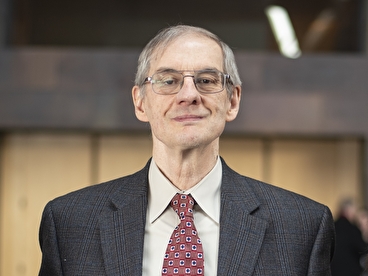
Professor Gary Davis of the Department of Civil, Environmental, and Geo- Engineering (CEGE) has been reappointed Richard P. Braun/CTS Chair in Transportation Engineering, effective July 1. His initial appointment was in July 2016.
CTS collaborated with the Department of Civil Engineering (now CEGE) to establish the chair in 2006. CTS initiated the position using royalties from Autoscope®, an invention in traffic detection technology developed by Professor Panos Michalopoulos and patented by the University. Braun was the founding director of CTS and a former commissioner of MnDOT.
The purpose of the endowed faculty chair is to foster innovation in the academic program in transportation engineering at CEGE. Below, Davis shares highlights of recent work and his plans for the next five years.
What are some highlights from your first appointment?
Braun Chair funds have played an important role in several research studies. One addressed some impending challenges related to the introduction of automated vehicles into our traffic streams. These challenges arise because safety-based highway design and operation require predicting the safety consequences of design and operational decisions, but the primary tools for making these predictions are empirical models. The models give reasonable representations of the conditions in place when they were constructed, but extrapolating the models to new conditions is problematic.

In particular, our current tools are functions of the conditions present during the last 20 or so years, which are likely to change—possibly drastically—as partially or fully automated vehicles and new mobility modes see wider deployment.
During the last five years we have made significant progress on this front. The current Highway Safety Manual uses empirical crash modification factors to predict the changes in crash frequencies resulting from design decisions. With one of my students, I developed a theoretical framework for recalibrating crash modification factors that have been estimated in one set of conditions to other, possibly different, conditions. This work was published in the 2019 proceedings of the Transportation Research Board (TRB) and has been presented at meetings of the TRB and the American Statistical Association.
Other topics I have studied with my students and other researchers include a model relating vehicle impact speed to pedestrian injury severity; a mechanism for studying freeway rear-ending crashes, including how the model could be extended to a population of vehicles equipped with intelligent cruise control and automatic brake assistance; and models describing how crash elements (e.g., initial positions and speeds, reaction times, braking rates) can be estimated by using data from vehicles’ event data recorders to reconstruct crashes.
What’s your focus for the next five years?
My primary research goal for the next five years is to develop our theoretical insights regarding the transferability and external validity of crash modification factors into an operational methodology. This requires, first and foremost, being able to provide defensible, quantitative explanations of how crash modifications achieve their effects.
Also, over the years we have developed a number of specialized techniques for applying Bayesian inference to crash reconstruction. These results are scattered in a number of papers and published in different journals. I would like to assemble this material, along with suitable background and tutorials, into a book.
What are your teaching plans?
I have regularly taught our required undergraduate courses as well as a graduate course in data analysis methods. Over the next several years I want to design and test a new four-credit technical elective, Highway Design and Traffic Operations, which could replace two existing courses. One reason to explore this is to open up some space in our curriculum for new courses. The practice of transportation engineering will continue to change as automated vehicles, micro-mobility, and shared mobility all become more prevalent. Future generations of transportation engineers will need competence in such areas as cyber-physical systems and data analytics. We need to plan those courses now.